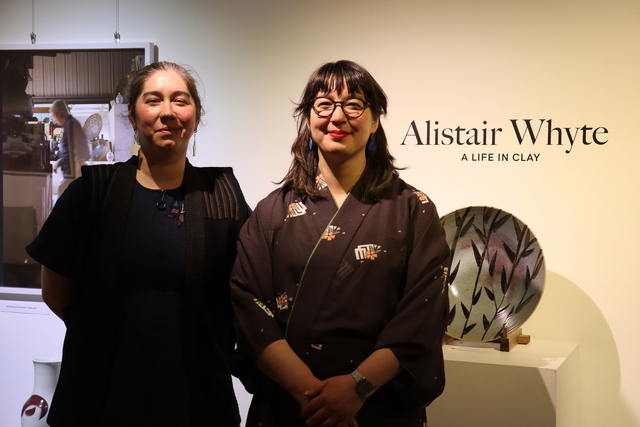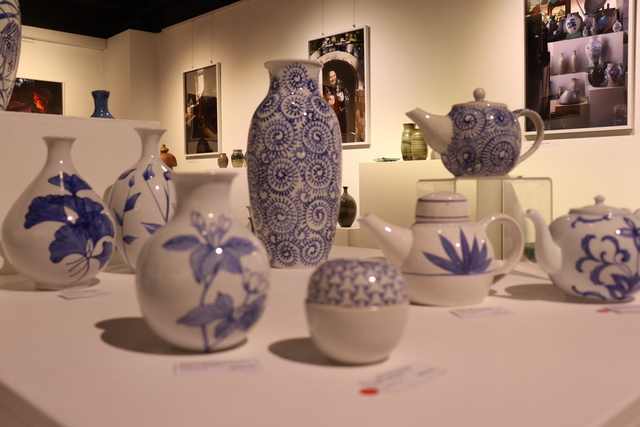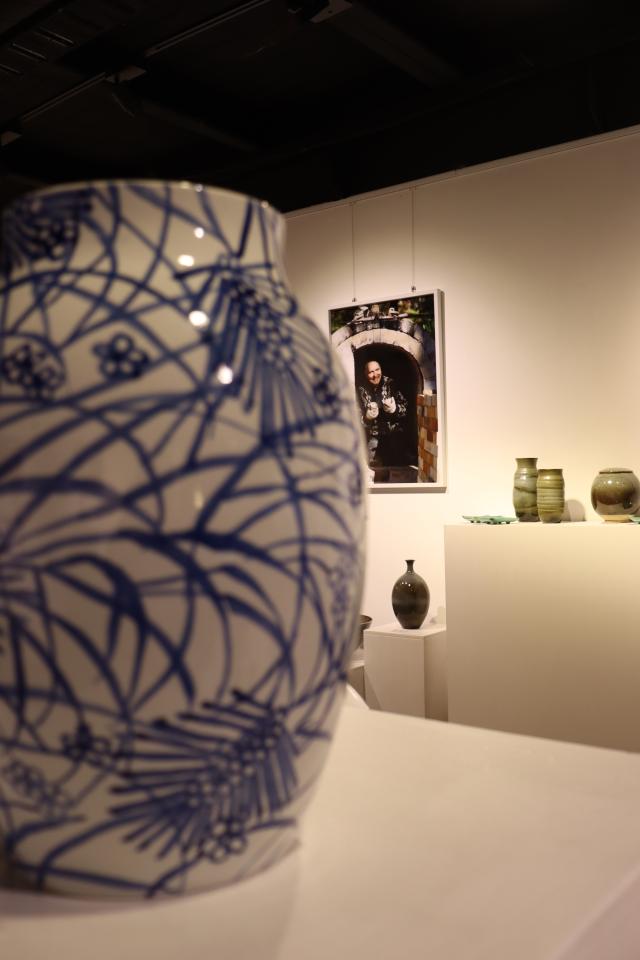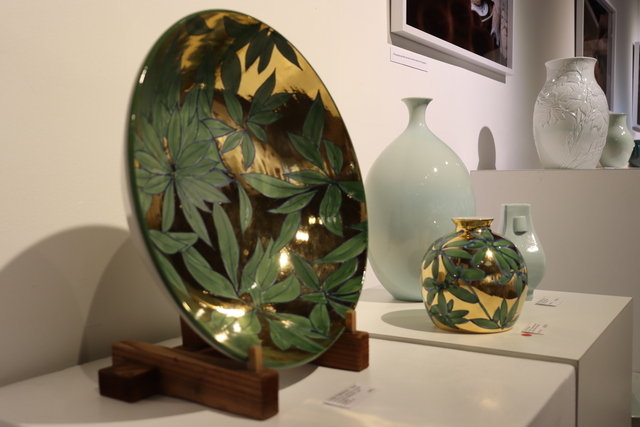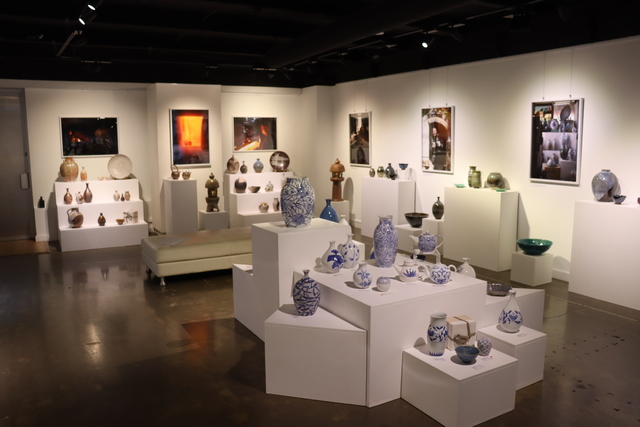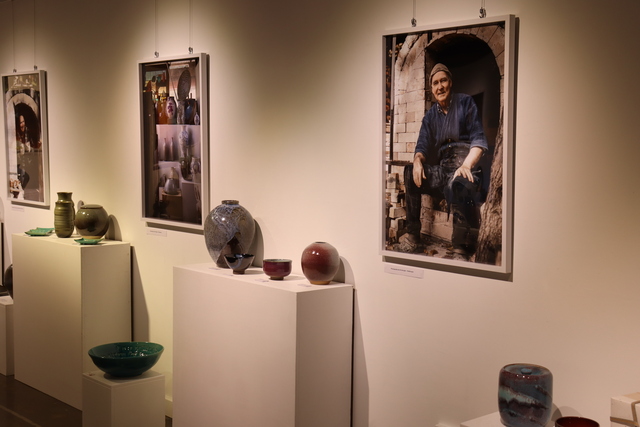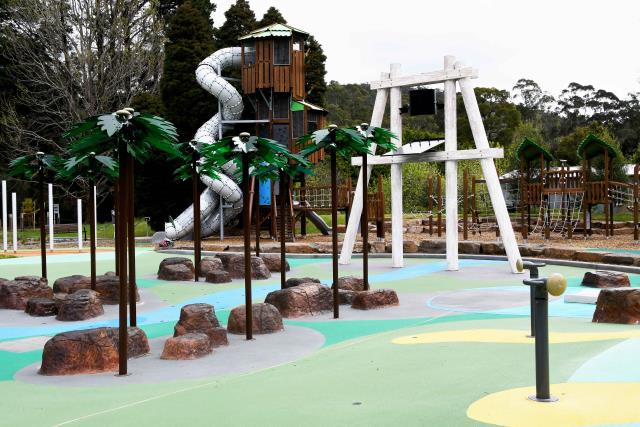A master of pottery, both in life and in death, Alistair Whyte’s legacy as a humble teacher shines through in a posthumous exhibition hosted by YAVA Arts Hub and Gallery.
As a nod to Alistair’s 50-year long career as a potter and artist, as well as a celebration of what would have been his 70th birthday in early August, his family decided to pay tribute to this man of sheer talent but also the kind-hearted educator who gave much of himself to others.
“It’s really an exhibition to show the breadth of his work but also his skill because he was a working artist for about 50 years,” eldest daughter Emi said.
“There’s probably not that many of his early pieces because looking through the studio we tried to find really good examples of the very different styles that he’s done over the years.”
The centrepiece of the exhibition is a display of Alistair’s most iconic work, the porcelain donning the traditional blue and white aesthetic.
“[It] is very traditional in Japan but also in parts of China as well. So that’s really been one of his biggest influences and you can see a lot of his master’s inspiration in his work because he worked under a master in Kyoto for quite a number of years,” Emi said.
From the Chinese skill of celadon glazing to his later work with wood firing and a collection of both crystalline and non-crystalline tea bowls which were collaborations with fellow artists Ted Secombe and Koji Hoashi, the exhibition brings to life the stages and styles explored over decades.
But perhaps the “prize piece” of the exhibition is one of deep connection to the Whyte family.
“The pinky coloured one is a pot that was made by Alistair before he passed away and he made a short series of them for the family because he knew he was getting close,” Emi said.
“The glaze inside is called tenmoku, so it’s a Japanese glaze and then the external glaze is actually one of Ted Secombe’s crystalline glazes.
“In the crystalline glazes and also in the tenmoku it’s very traditional to have ash included into those. Alistair spoke quite in depth with Ted before he passed away saying that one of his final wishes was once he passed away, that he would like his ashes to be included in the glaze for the family.”
The embodiment of Alistair’s life and work in this one piece epitomises his desire to challenge, to teach and to leave behind lessons.
“We call it the final form because that’s what he wanted. He was essentially a potter his whole life. He wanted to become the vessel at the end so he can live on that way.”
Emi said in many ways designing the exhibition and selecting the works was a healing process for the family, being only a year since they said goodbye to Alistair.
“It’s been a very good process for grieving because the studio was very much his space. So it has been amazing going into that and really feeling like dad could just pop his head around the corner at any time,” she said.
“And opening up different boxes we hadn’t even looked in for 20 years or longer, seeing pieces from when we were younger or pieces we’ve never even seen before.”
For second youngest daughter Yoko, she said “there were so many works I’d never seen before” because of the incredible archive of works her father had, “some from before we were born”.
Being back in an exhibition space, especially doing the behind the scenes work, Yoko said reminded her of her childhood.
“It feels very familiar to growing up and going to different exhibitions with dad and helping him out,” she said.
“I remember in his earlier exhibitions when we were kids, he had a lot of Japanese friends and he made us all like T-shirts that had our names in Japanese on the back and he did a screen print on the front of some of his pots and with a saying that he created that is ‘flowers bloom and fade away but ceramics last forever’.”
While many of the works are special in one way or another, some stand out as truly showcasing the technical ability he crafted and honed from his early days.
This is particularly present in the celadon glazed works, highlighting Alistair’s carving ability and the careful firing required; a larger porcelain vase not normally produced by potters because of the weight and risk of slumping in the kiln but also Alistair’s painting skill; and the gold pieces.
Yoko said those gold works, because the leaf shape resembles a gum leaf, it “feels like my heritage in an artwork” in bringing the Japanese and Australian influences together.
The legacy and teachings Alistair leaves behind in both his ceramics and his book Turning Inside Out: From Australia Potter to Master of Japanese Ceramics, Emi said hopefully will help inspire the next generation.
But more than that, the exhibition rightly named A life in Clay, is a celebration of Alistair Whyte in all his forms.
“We want to celebrate dad. He was not just an amazing father but an amazing artist,” Emi said.
The exhibition will run until Sunday 18 August at YAVA, located on Main Street in Healesville.

